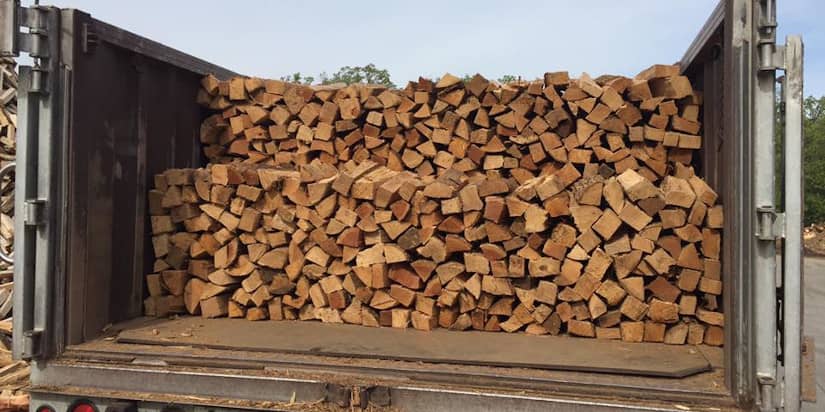The Weighty Truth: How Much Does a Cord of Firewood Really Weigh?
Firewood, a comforting crackle on a winter night, is a source of warmth and ambiance in many homes. But for those purchasing firewood, a question often arises: just how much does a cord of wood weigh? The answer, unfortunately, isn’t as simple as a single number. Let’s delve into the factors that influence the weight of a cord of firewood, explore ways to estimate weight, and shed light on common misconceptions.
Understanding “Cord”: A Unit of Volume, Not Weight
First, it’s crucial to understand that a “cord” is a unit of volume used to measure firewood, not weight. Imagine a neat stack of wood logs: 8 feet long, 4 feet wide, and 4 feet high. This standard cord would occupy 128 cubic feet of space. The weight of the firewood within this volume, however, can vary significantly depending on several factors.
Weight Variations: A Tale of Species, Moisture, and Stacking
Here’s a breakdown of the key factors affecting the weight of a cord of firewood:
-
Wood Species: Different wood species have varying densities. Denser woods, like oak or hickory, will weigh more per cord compared to lighter woods like pine or aspen. Here’s a general comparison:
- Oak, Hickory: 4,000 – 5,000 pounds per cord (seasoned)
- Maple: 3,500 – 4,500 pounds per cord (seasoned)
- Ash: 3,000 – 4,000 pounds per cord (seasoned)
- Birch: 2,500 – 3,500 pounds per cord (seasoned)
- Pine, Aspen: 2,000 – 3,000 pounds per cord (seasoned)
-
Moisture Content: The amount of moisture in the wood significantly impacts weight. Seasoned firewood, with a moisture content of around 20%, will weigh considerably less than freshly cut “green” wood. Green wood can weigh 30-50% more than seasoned wood.
-
Stacking Density: How tightly the wood is stacked in the cord also affects weight. A loosely stacked cord with larger air gaps will naturally weigh less than a tightly packed cord.
Estimating Weight: A Balancing Act
Given these variations, estimating the weight of a cord of firewood requires some detective work. Here’s how you can approach it:
-
Identify the Wood Species: Knowing the type of wood you’re dealing with provides a starting point for weight estimation.
-
Moisture Content: If possible, check the moisture content of the wood. Ideally, aim for seasoned firewood (around 20% moisture content) for optimal burning efficiency and weight predictability.
-
Stacking Density: Visually assess how tightly the wood is stacked. A loosely stacked cord might weigh 10-20% less than a tightly packed one.
-
Online Resources and Conversion Charts: Several online resources and firewood supplier websites offer weight conversion charts based on wood species and moisture content. These can provide a helpful ballpark figure.
Example: You purchase a cord of oak firewood that appears seasoned (low moisture content) and tightly stacked. Based on the information above, you can estimate the weight to be around 4,500 pounds (considering oak’s weight range and tight stacking).
Important Considerations and Safety Tips
-
Buying Firewood: When purchasing firewood, inquire about the wood species, moisture content, and stacking method. This information will help you estimate weight and ensure you’re getting good value.
-
Don’t Overload: Be mindful of weight limitations when transporting or storing firewood. Overloading can be dangerous and damage vehicles or structures.
-
Fire Safety: Always store firewood properly, seasoned and away from your home, to minimize fire hazards.
FAQ on Firewood Weight
Q: Is a cord of firewood always 4,000 pounds?
A: No, a cord of firewood is a unit of volume, not weight. The actual weight can vary depending on the wood species, moisture content, and stacking density.
Q: How can I tell if firewood is seasoned?
A: Seasoned firewood will appear lighter in color, have cracks along the grain, and sound hollow when struck together.
Q: Is it better to buy firewood by weight or by cord?
A: Ideally, buying by weight is more accurate. However, cord is the standard unit of measure, so buying by weight might require converting the weight to cords based on the wood species.
Beyond the Cord: Alternative Firewood Measurement Methods
While the “cord” remains the dominant unit for firewood measurement, some alternative methods exist, particularly for smaller quantities. Here’s a quick rundown:
-
Face Cord: A face cord is half the size of a standard cord, measuring 8 feet long by 4 feet high but with a variable depth (typically 16 to 18 inches). It’s a good option for smaller fireplaces or occasional use.
-
Rick: A rick is a regional term with varying definitions depending on location. It can refer to a specific stack size (e.g., 4 feet by 4 feet by 8 feet) or a loosely stacked pile of a certain weight (e.g., a “half-rick” might weigh around 1,000 pounds). Always clarify the definition with the seller when encountering “ricks.”
-
Bundle: Firewood bundles are pre-cut and tied together, typically with a standard volume or weight. These are convenient for small fireplaces or starting fires and are often sold by grocery stores or gas stations.
-
Cubic Foot: While less common, some firewood vendors might offer pricing based on cubic feet, especially for loose firewood. This allows for precise measurement and eliminates stacking density concerns.
Remember, regardless of the measurement method, prioritize clear communication with the seller. Inquire about the wood species, moisture content, and conversion rates (if applicable) to ensure you’re getting a fair deal and the right amount of firewood for your needs.






More Stories
Where to Watch USMNT vs Jamaica National Football Team
How I Met My Monster
How Should a Ring Fit